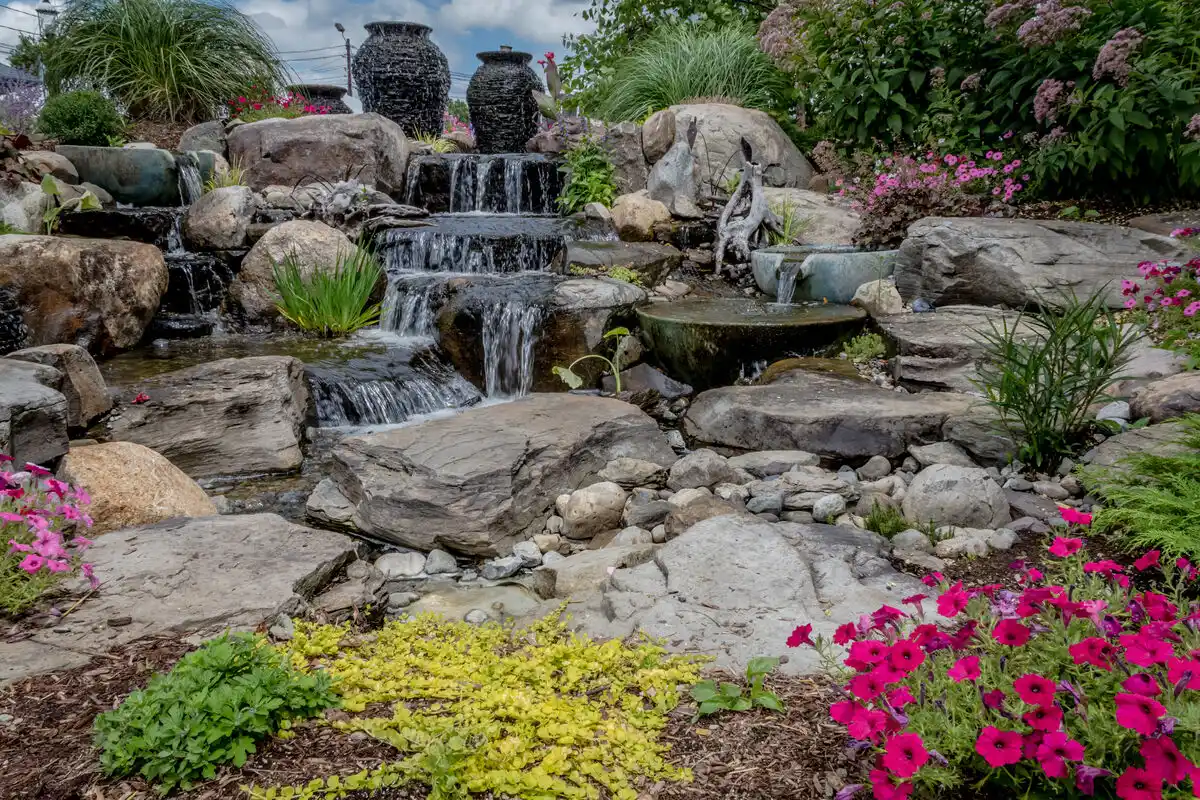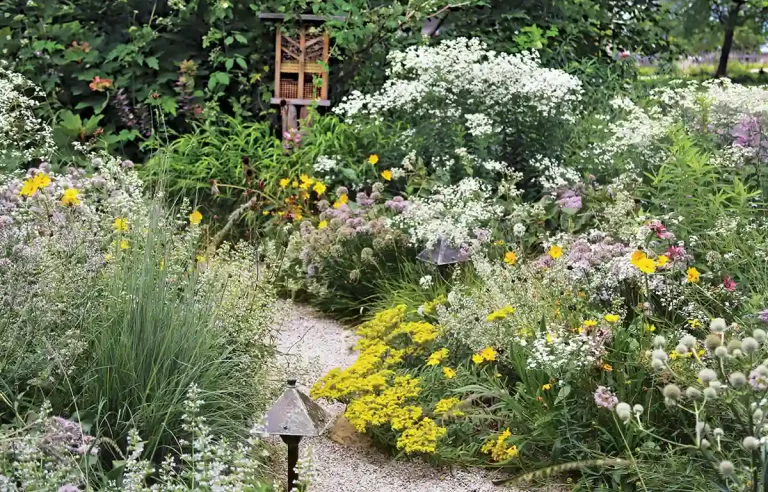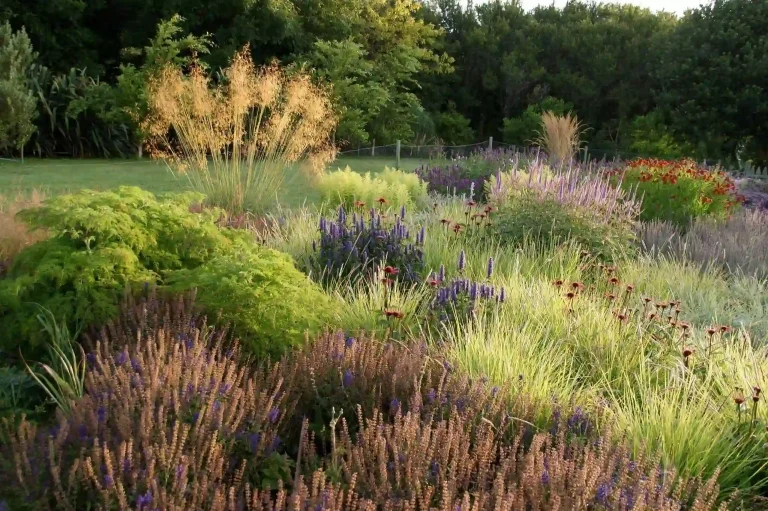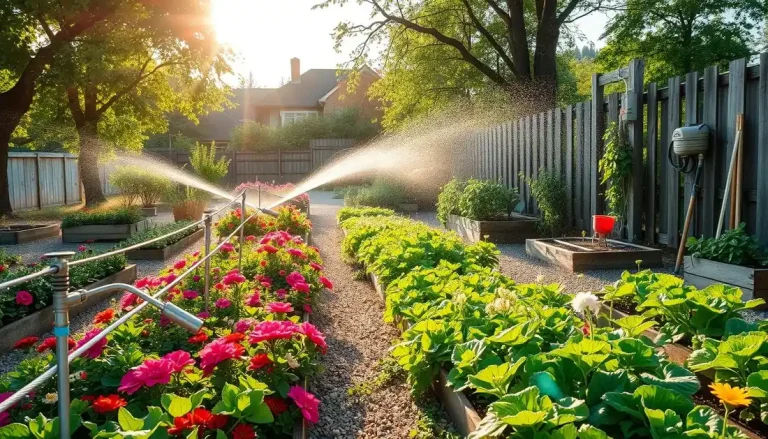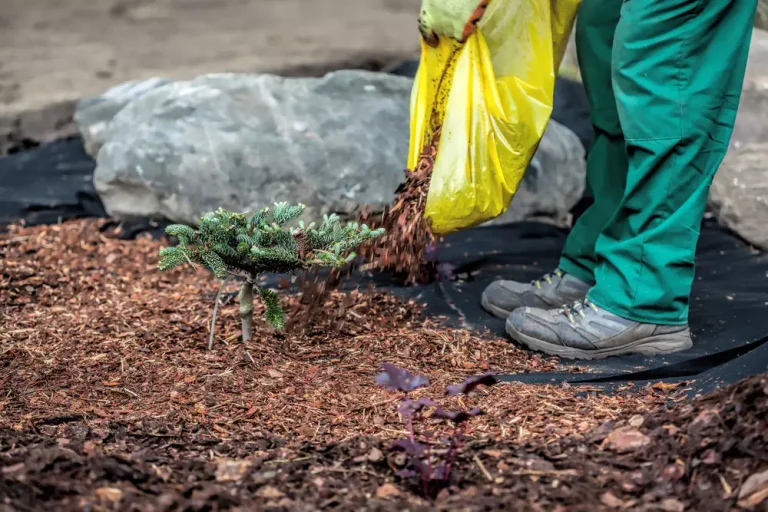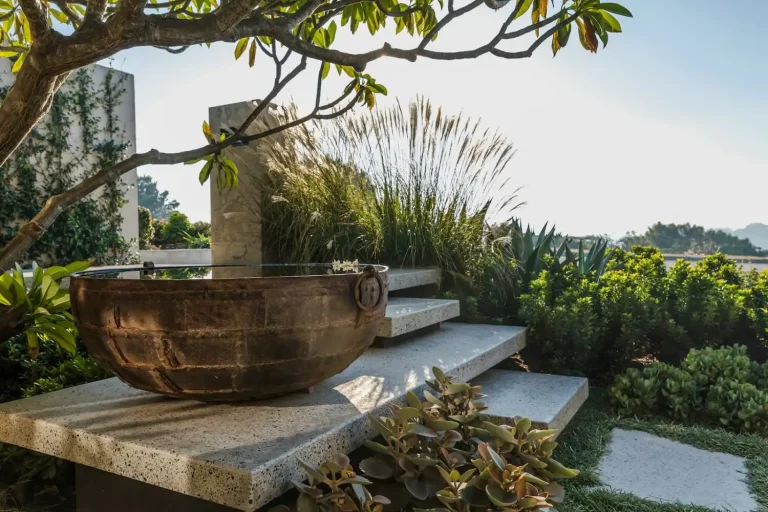Low‑Water Luxury Backyard Garden Design: Elegant & Water‑Smart Solutions
Key Principles of Low‑Water Luxury Garden Aesthetics
Elevating design while reducing water use
A luxury garden isn’t just about more plants or lavish features; it’s about harmony, scale, contrast, focal elements, and high-quality materials. In a low-water garden, these design goals must align with a water-wise strategy. For instance, use high-impact specimen plants (succulents, sculptural trees) in generous spacing, and reserve denser plant zones where irrigation is carefully controlled. Balance open “breathing space” with planted zones; the contrast of hardscape, negative space, and planting enhances the premium feel.
Materials matter: premium paving (natural stone, architectural concrete), elegant gravel, and sculptural boulders make hardscape an integral element rather than an afterthought. Gravel or decomposed granite path surfaces also act as permeable groundcover and reduce evaporation compared to dense mulch alone.
Layering, framing vistas, and focal points (e.g., water features, sculpture, pergola) help convey sophistication. Meanwhile, grouping drought-tolerant plant palettes allows efficient irrigation zoning (hydrozoning) so that you water intensively only where needed. (Hydrozoning is the practice of clustering plants by water requirement to conserve water and manage irrigation effectively.)
Site analysis & climate adaptation
Before you design, thoroughly analyze sun exposure, wind patterns, drainage, soil type, slope, and microclimates. These influence your plant palette and material choices. For example, surfaces that receive full midday sun may need reflective or lighter-colored paving to reduce heat load. Choose species and hardscape materials locally suited to your climate rather than importing foreign looks that struggle.
Designers of drought-resilient gardens emphasize that “you design with the conditions you have, not the ideal conditions you wish you had.” Also, in drought-prone regions, the use of stone, boulders, and gravel pathways as structural anchors becomes both aesthetic and functional.
Core Components of a Low‑Water Luxury Garden
Plant palette & planting design
Select drought-tolerant plants with structural and textural interest: architectural succulents, sculptural shrubs, ornamental grasses, and well-chosen trees. Use repetition for rhythm. Leave breathing space to highlight each plant’s form. Layer heights and textures to convey depth.
Pair evergreen shrubs (that cope with dryness) with seasonal accent bloomers in microzones. Use native or climate-adapted species to reduce water and maintenance. Many luxury drought gardens are built around a few premium specimens (e.,g. architectural agave, olive tree, arid-form flowering trees) that become focal points.
Hardscape & groundcover strategy
Elegant hardscape is a key differentiator in luxury settings. Materials like natural stone, finely graded gravel, decomposed granite, or permeable pavers create durable, sophisticated walkways or terraces that also allow infiltration. Use gravel and stones not just as filler but as design materials. (Designers often use gravel to “connect garden areas” in drought gardens, establishing breathable planes and visual continuity.)
Infill gaps between pavers or stepping stones with drought-tolerant groundcovers (creeping thyme, drought-tolerant sedums) to soften edges while suppressing weeds and reducing evaporation. Use edgings, subtle elevation changes, and contrasting textures to separate zones while maintaining cohesion.
Water management & irrigation systems
To maintain a luxury appearance under low water use, your irrigation system must be precise and well-integrated. Use drip irrigation, subsurface tubing, or micro-spray for targeted watering. Combine this with rainwater harvesting, smart controllers, or soil moisture sensors so that you only water when needed. Many modern water-wise landscape guides emphasize integrating rainwater capture and drip systems with design.
Also, capture runoff via grading or swales, use permeable paving to allow infiltration, and use contouring or micro-terrain to direct water to planting zones.
Five Product Solutions to Enable Luxury Low‑Water Design
Here are real-world product options that can support your design. Each is well-suited to luxury garden settings and low-water performance.
1. Micro Drip Irrigation Kit
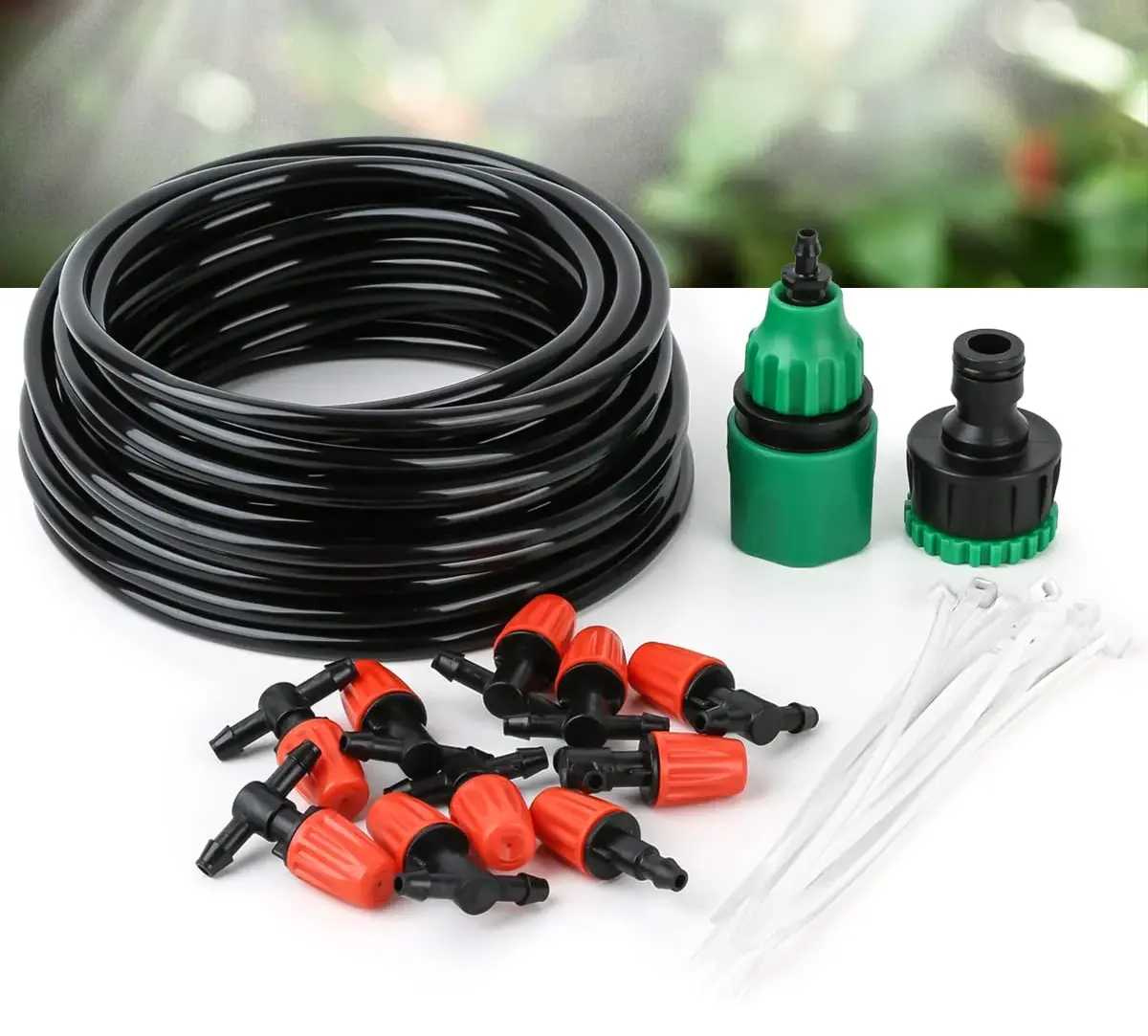
Micro Drip Irrigation Kit includes fine tubing, micro-emitters, connectors, and stakes designed to deliver water precisely at the root zone with high efficiency. In luxury gardens, this allows irrigation to be hidden beneath mulch or beneath gravel, maintaining clean aesthetics.
Details & benefits:
-
Reduces runoff and evaporation by delivering water slowly.
-
Allows customization of emitter flow rates per plant or zoIt can
-
Can be integrated with timers and smart controllers to optimize water use.
Use case: In a mixed planting bed with succulents, grasses, and shrubs, you can assign different emitter types (e.g., low-flow drippers for succulents, micro-sprays for grasses) so each zone gets what it needs. This system helps maintain the lush look of your planting without wasting water.
2. Australian Soaker Hose

Australian Soaker Hose is a porous soaker hose is porous and emits water slowly along its length. In luxury gardens, you can hide it beneath decorative mulch or stone veneer, providing uniform moisture to linear plantings (e.g, hedges, border shrubs) without visual clutter.
Details & benefits:
-
Even water distribution along the length.
-
Low maintenance, simple installation.
-
Good for linear beds or margins where drip lines would be too segmented.
Use case: Along a hedge of drought-tolerant shrubs, lay the soaker hose at the base, cover loosely with gravel or mulch. The result: deep, slow watering that supports root development and prevents shallow irrigation.
3. Soil Moist Granules
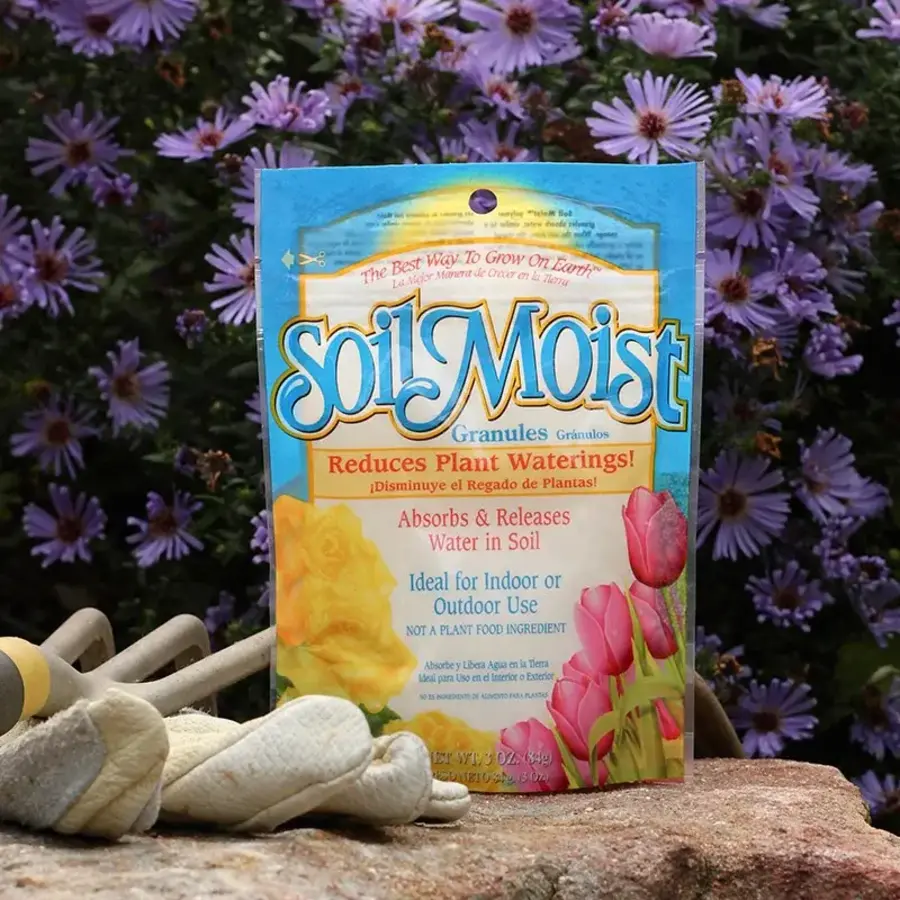
Soil Moist Granules are superabsorbent polymer granules that, when mixed into soil, expand and retain water, releasing it slowly to plant roots. In a luxury low-water garden, they act as a buffer during dry spells, especially for younger plantings.
Details & benefits:
-
Enhance the soil’s water-holding capacity.
-
Reduce irrigation frequency.
-
Especially useful in sandy or fast-draining soils.
Use case: When establishing new plantings, mix these granules into the planting hole and root zone before backfill. They help the plant survive unexpected dry periods while reducing stress and early-season watering.
4. Low‑Water Landscaping For Dummies
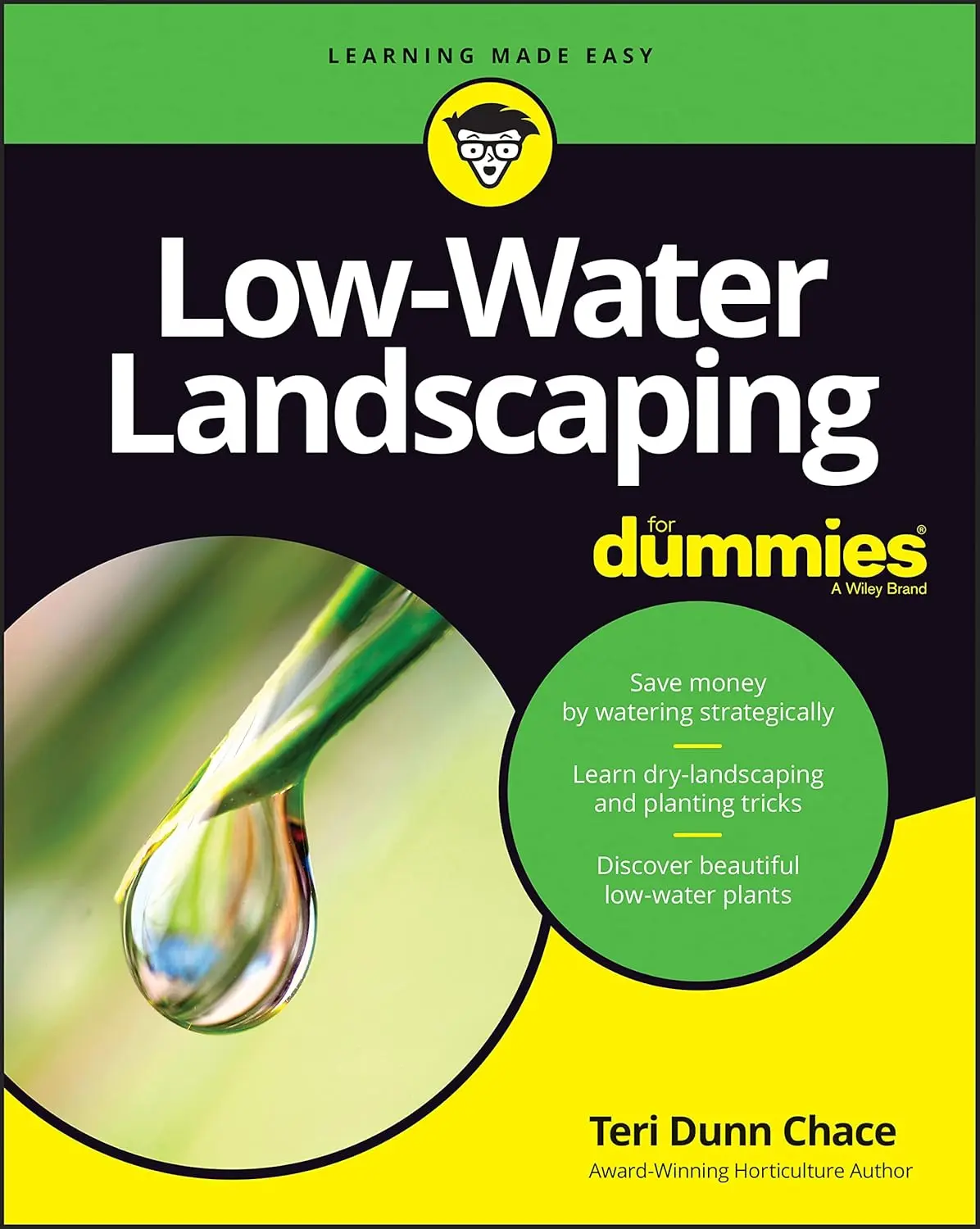
Low‑Water Landscaping For Dummies is a practical guidebook aimed at designers, homeowners, or landscape professionals who want to implement low-water designs. Although not a physical garden component, its strategies and frameworks are directly actionable.
Details & benefits:
-
Covers plant selection, irrigation techniques, a design principles.
-
Helps avoid common mistakes in low-water luxury gardens.
-
Serves as a reference manual during planning or troubleshooting.
Use case: Use the book as a companion while sketching your garden layout or when evaluating plant/irrigation options. It prevents missteps and wasted investment.
5. Touch n Foam Landscape Filler Adhesive 12 oz
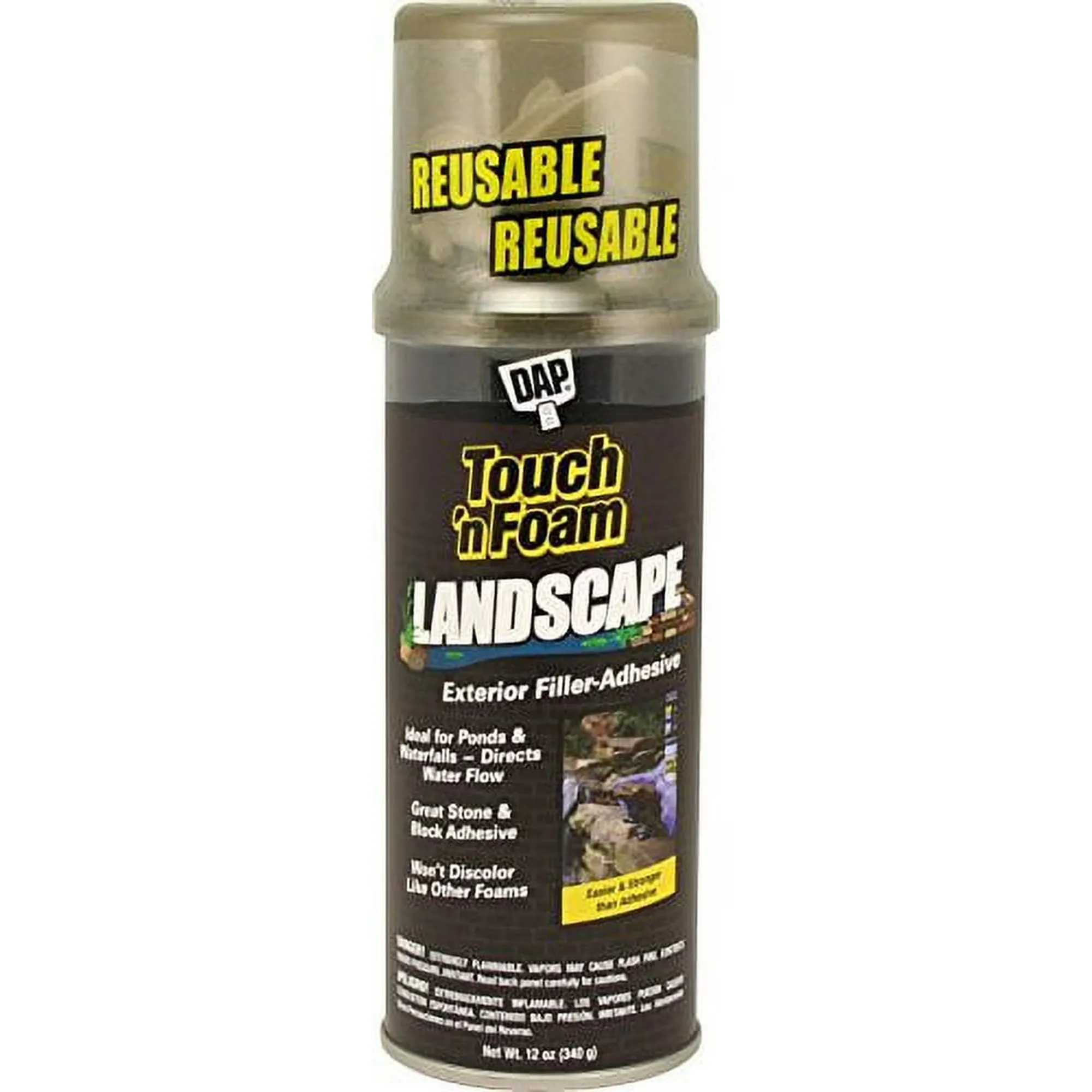
While not directly irrigation-related, the Filler Adhesive 12 oz foam adhesive product is sometimes used in hardscape construction (eg, securing pavers, structural features) with minimal water usage in construction. In luxury gardens, maintaining dry construction is important.
Details & benefits:
-
Helps bond stones or structural elements with minimal mortar water.
-
Useful for setting vertical features or planters without heavy cement use.
-
Supports a cleaner aesthetic by minimizing mortar joints.
Use case: In erecting a thin stone veneer wall or decorative planter wall, using this foam can reduce on-site water use and mess. It helps maintain the elegance of your hardscape while being more sustainable.
Benefits of Low‑Water Luxury Backyard Design
Water savings and sustainability
By using precise irrigation, drought-tolerant plantings, mulches, and efficient soil enhancements, you drastically reduce water consumption, often by 50 % or more compared to conventional lawns and overwatered gardens. This is not only environmentally responsible but also cost-saving in regions where water is metered or restricted.
Long-term resilience and lower maintenance
Luxury gardens often require upkeep, but when designed with drought resilience, maintenance drops. Fewer watering cycles, less mowing, fewer replacements, and less nutrient leaching result in lower time and financial costs over the years. Your garden ages with dignity, not decline.
Aesthetic appeal with context
Low-water luxury gardens often lean into subtler palettes, architectural forms, textural contrasts, and premium materials. They avoid the oversaturated “green carpet” look and instead deliver timeless elegance. Stone, gravel, architectural succulents, and sculptural trees take center stage. The aesthetic of restraint becomes a mark of sophistication.
Soil health, ecosystem support, and biodiversity
Less irrigation means less leaching of nutrients and less fungal/bacterial stress. Drought-resilient landscapes often support native pollinators, beneficial insects, and birds. In effect, your garden becomes more ecologically integrated rather than an artificial turf patch.
Elevated property value & market appeal
A well-executed luxury, water-wise garden signals prestige, conscientiousness, and modern design thinking. In many markets, it becomes a selling feature: a beautiful, low-maintenance outdoor space that doesn’t burden utilities.
Use Cases & Real‑World Scenarios
Scenario A: Mediterranean-style luxury home
In a Mediterranean climate, the homeowner designs terraces using limestone pavers, gravel paths, and olive or citrus trees. Underplanting includes lavender, rosemary, and architectural succulents. Drip irrigation and soil moisture sensors govern watering. The result: a lush, upscale courtyard feel that stays largely green with occasional watering. It solves the problem of inefficient lawns in hot climates, while delivering experiential value.
Scenario B: Modern desert chic backyard
A homeowner in an arid zone uses agave, aloes, yucca, and sculptural cacti as specimen elements. Gravel bed and crushed rock serve as the “ground plane.” A sleek rectangular reflecting trough or minimal water feature offers a cooling focal point. Subsurface drip lines are concealed. This design solves the challenge of making a desert-style yard feel luxurious—not barren—while minimizing water.
Scenario C: Slope or hillside property
On a sloped backyard, terraces are cut into the hill. Each terrace features low-water shrub zones, gravel surfaces, and stone walls. Swales or mini-catchment channels direct rainwater into planting zones. Smart irrigation supplies supplemental water only as needed. The system addresses erosion, drainage, and water waste challenges while giving a refined garden experience.
Scenario D: Urban luxury backyard with tight footprint
In a compact city lot, the designer uses minimalist hardscape, raised planters with drought-tolerant shrubs, vertical succulent walls, and elegant stone pathways. Irrigation is micro-drip, and every planting zone is hydrozoned. Even within a tight space, the garden feels expansive due to framing, negative space, and contrast. The approach solves the problem of water-intensive small gardens and limited maintenance capability.
How to Build, Buy & Source Materials
Planning & design steps
-
Conduct site audit: sunlight, drainage, wind, microclimates.
-
Sketch zones: living areas, planting beds, pathways, focal features.
-
Hydrozone layout: cluster high-water demand plants separately from drought-tolerant zones.
-
Choose high-quality hardscape materials (stone, permeable pavers, decorative gravel).
-
Specify irrigation (drip, micro-spray, sensors) early so it’s integrated, not retrofitted.
-
Select premium, climate-appropriate plant specimens.
-
Budget and sequence: install grading and drainage, then hardscape, then soil prep, then planting and irrigation.
-
Maintenance plan: annual refresh of mulch, emitter checks, seasonal pruning, and moisture monitoring.
Buying example products and sources
-
Micro Drip Irrigation Kit – search online garden or irrigation suppliers; often sold in kits.
-
Australian Soaker Hose – can be found in garden supply or irrigation stores.
-
Soil Moist Granules – sold at hydroponic or gardening suppliers.
-
Low-Water Landscaping For Dummies – booksellers, online marketplaces.
-
Touch n Foam Landscape Filler Adhesive – masonry and landscape contractors’ supply.
For materials like stone, gravel, mulch, and soil amendments, local quarries, landscape suppliers, and garden centers are ideal (to reduce shipping costs). Always request a sample or a small order to test the color and texture. Also, review supplier certifications, sustainability credentials, and delivery logistics.
FAQ
Q1: Can a low-water luxury garden ever look “too dry” or sparse?
A1: It can, if poorly designed. The key is contrast, composition, and focal accents. Use statement plants in generous spacing, high-quality materials, visual layering, and design elements (e.g., pergolas, sculpture) to fill negative space. Use gravel, stone, and textured surfaces to bind the aesthetic. A common mistake is overplanting to “fill” space, which increases water demand. Instead, embrace space as design.
Q2: How often should I water in a low-water luxury garden?
A2: It depends on climate, season, soil, and plant type. Generally, you water deeply and less frequently, encouraging deep root growth. Use automated controllers or soil sensors to avoid guesswork. Many drought designs require watering only weekly or biweekly in warmer periods. Monitor plant health (leaf color, vigor) as your guide.
Q3: How do I transition an existing lush, high-water garden into a low-water luxury design?
A3: Begin by removing incompatible turf or high-demand plants. Regrade for drainage, install irrigation zones, build hardscape, and then replace planting zones incrementally. Use temporary paths and staging. Introduce drought-tolerant specimens gradually. Retain a high-end look during transition by using high-quality materials and focal features early (e.g, sculpture, hardscape, specimen plants). Over 1–2 seasons, you can convert fully to low-water luxury.
